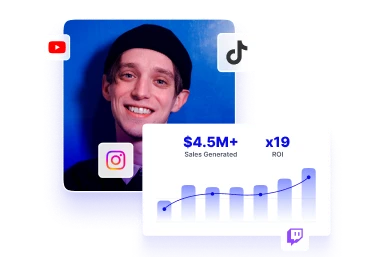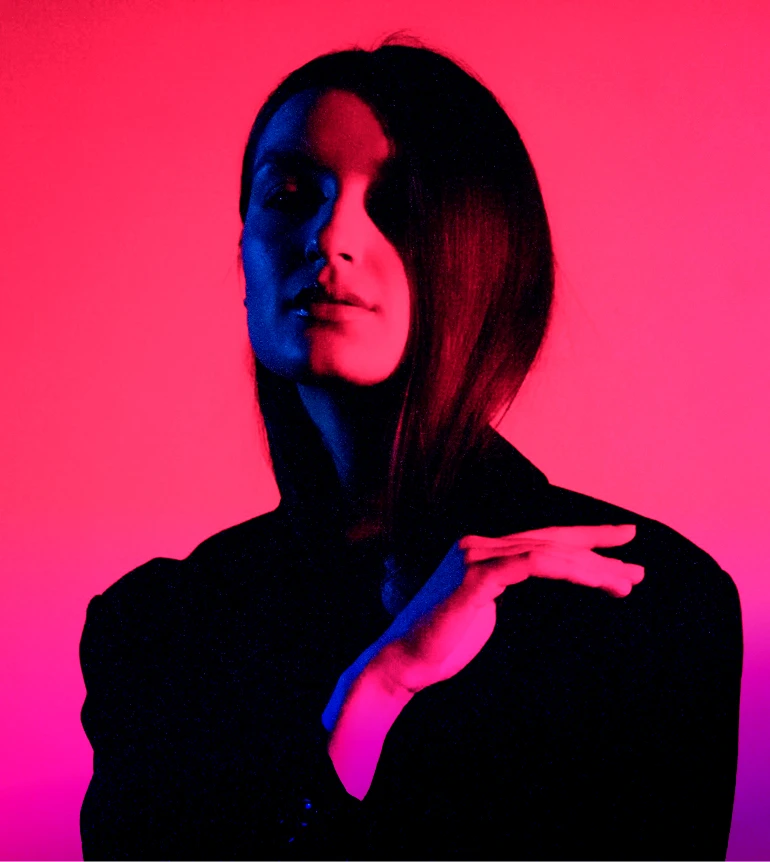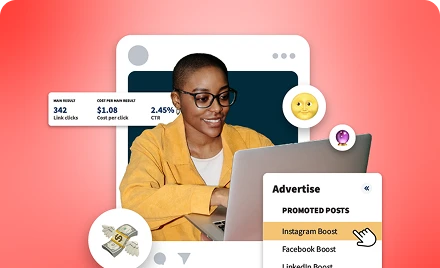What are the best social media platforms for brands looking to implement influencers in their marketing strategy?
Influencer marketing has become a vital strategy for brands aiming to boost their online presence and increase engagement. With more than 50% of marketers planning to increase their influencer marketing budgets next year, the focus is now on getting the best return on investment by choosing the right influencers on the most effective platforms.
Micro-influencers—those from 10k to 100,000 followers—have been steadily becoming the preferred type of creator of sales-driven campaigns.
Some brands take it another step forward, by employing nano-influencers, active creators that have less than 10k followers.
Why Nano-Influencers?
While at first, their low follower count may be concerning to some brands, there are many benefits to using niche and smaller creators in your network:
- Higher Engagement: Micro-influencers often achieve significantly higher engagement rates. For instance, TikTok reports engagement rates as high as 142.69% among micro-influencers, compared to 16.34% on Instagram.
- Authenticity: They are perceived as more relatable, resonating well with niche audiences and building trust.
- Cost Efficiency: Partnering with micro-influencers is generally more affordable, providing a high return on investment.

Should My Brand Use a Nano-Influencer Strategy?
A micro-influencer-centric strategy is an effective way to maintain a constant presence in many user feeds, but it is not a one-size-fits-all solution. There are specific industries and types of firms where these strategies work particularly well:
- Smaller Firms: Micro-influencers offer a budget-friendly way to test the waters.
- E-commerce Brands: Online stores often use smaller creators for their authenticity and cost efficiency, frequently employing affiliate marketing.
- Niche Industries: Micro-influencers provide strong targeting for niche markets where larger influencers may not be effective.
- Sales-Focused Campaigns: Micro-influencers are great for campaigns aimed at driving positive ROI and increasing sales, even if they aren’t as effective for building broad brand awareness.
However, micro-influencers often differ depending on their preferred platform of choice. Understanding how each platform behaves and which one is best suited for your campaign can be a game-changer for success.
Platform Analysis
This article explores the best social media platforms for brands to leverage micro-influencers to drive engagement growth, focusing on three major platforms: Instagram, YouTube, and TikTok.
We analyzed key metrics that offer a clear view of a creator’s profile and help brands evaluate their impact in the last 12 months. These metrics are the Engagement Rate, Follower Growth Rate, and Engagement Growth Rate.
What are the key metrics in influencer marketing?
The engagement rate measures how actively an audience interacts with social media content. It evaluates follower actions—such as likes, comments, shares, clicks, and saves—to gauge how effectively content captures attention and drives interaction.
Follower growth rate measures how quickly an account gains new followers over a specific period. It reflects the account’s ability to attract and retain an audience, indicating its growing influence and popularity. Follower growth rate is calculated as a percentage based on the number of new followers divided by the total number of followers at the start of the period.
Engagement growth rate tracks changes in the level of audience interaction with content over time. It assesses whether engagement, such as likes, comments, and shares, is increasing or decreasing, providing insights into the effectiveness of content strategies. Engagement growth rate is calculated as a percentage based on the increase in engagement actions over a defined period.
here’s how you can calculate these metrics using these formulas:
Instagram: Visual Content and Community Building
Instagram remains a popular platform for influencer marketing, particularly for brands using visual content to engage audiences.
Engagement Rate (IG)
Average: 35.19%
Engagement Rate Growth: 46.87%
Top 10%: 11.57%
Engagement Rate Growth: 81.68%
High engagement rates for nano-influencers, particularly those with smaller followings, suggest strong potential for brands to achieve engagement through authentic influencer partnerships.
This significant engagement rate growth indicates that nano-influencers on Instagram are expected to increase their engagement rapidly over time. Brands can opt for Long-term partnerships to maximize their expected engagement on multiple occasions, as the creator’s audience is expected to be more interactive as the audience grows.
YouTube: Long-Form Content and Niche Targeting
YouTube is known for its long-form video content, which allows for deeper audience connections and content longevity.
Engagement Rate (YT)
Average: 5.43%
Engagement Rate Growth: 192.98%
Top 10%: 10.45%
Engagement Rate Growth: 256.73%
While lower on average, high engagement among the top 10% of nano-influencers suggests brands can benefit from quality content producers. Finding the highest quality creator can be a deciding factor in the success of a YouTube influencer campaign.
Upfluence’s AI-powered influencer search can make finding creators, no matter the niche and performance thresholds
High engagement rate growth highlights YouTube’s potential for substantial engagement, especially for brands that invest in long-term influencer relationships.
TikTok: Rapid Growth and Viral Engagement
TikTok has quickly become one of the best social media platforms for brands, thanks to its potential for virality and appeal to younger demographics.
Engagement Rate (TT)
Average: 142.69%
Engagement Rate Growth: 356.46%
Top 10%: 17.36%
Engagement Rate Growth: 197.19%
TikTok boasts the highest engagement rates for nano-influencers, making it ideal for brands seeking high visibility and rapid engagement.
The highest engagement rate growth among all platforms suggests TikTok’s potential for virality and substantial engagement growth.
It is very common for small creators to receive several interactions that surpass their follower count multiple times over. However, turning this success into a long-term career is one of the most challenging aspects of making content on the platform for many creators.
Key Takeaways for Brands
- Instagram: Best for visual storytelling and fostering steady engagement, particularly with smaller influencers. Engagement tends to decrease with larger influencers, but the platform remains effective for consistent presence and steady sales campaigns, ideal for affiliate marketing.
- YouTube: Provides stable engagement rates across all follower ranges, making it a good choice for brands focused on long-form content like tutorials and reviews.
- TikTok: Ideal for rapid growth and high-impact influencer marketing, especially for brands targeting younger audiences. Even as influencers gain followers, TikTok maintains strong engagement, making it suitable for campaigns aiming for quick, viral growth, like flash deals or limited-time offers.
What About Micro Creators?
How does the performance of creator differ after surpassing the 10k threshold?
Brands should be aware of the different ranges of audiences to better gauge their influencer marketing objectives. We compared engagement rates across different follower ranges (0-10k, 10-50k, 50-100k) on all of the best social media platforms (Instagram, YouTube, and TikTok) to explore how engagement varies with follower count across various platforms.
Cross-Platform Key Metrics
- Average: 35.19%
- Top 10%: 11.57%
- Average: 3.45%
- Top 10%: 6.21%
- Average: 3.12%
- Top 10%: 6.58%
- Average: 5.43%
- Top 10%: 10.45%
- Average: 5.19%
- Top 10%: 10.04%
- Average: 4.98%
- Top 10%: 9.51%
- Average: 142.96%
- Top 10%: 17.36%
- Average: 8.38%
- Top 10%: 12.22%
- Average: 7.64%
- Top 10%: 13.69%
Which Platform is Better for Your Brand?
Instagram performs strongly with smaller influencers (0-10k followers), with an average engagement rate of 35.19% and a top 10% rate of 11.57%.
However, these rates drop to 3.45% and 6.21% in the 10-50k range and further to 3.12% and 6.58% in the 50-100k range.
Brands may see diminishing engagement returns as influencer size increases, therefore we recommend creating short impactful collaborations if you are planning to have a wide network of creators.
It s still worth keeping some creators in the top 10% for longer periods as their average engagement rate tends to grow after surpassing the 50k threshold on Instagram.
TikTok
TikTok leads in engagement rates, particularly in the 0-10k follower range, with a high average engagement rate of 142.69% and a top 10% engagement rate of 17.36%.
Although engagement rates decrease slightly as follower counts increase to 10-50k (8.38% average) and 50-100k (7.64% average), TikTok maintains a competitive edge. This makes it ideal for brands seeking rapid engagement and virality.
After reaching the 10k threshold, it could be argued that creators start to not rely on virality as much, but their engagement rate tends to become consistent despite the increase in followers, allowing for safer long-term collaborations.
Youtube
YouTube shows consistent engagement rates across all follower ranges, with an average rate of 5.43% for 0-10k followers and remaining around 5% for larger tiers (5.19% for 10-50k and 4.98% for 50-100k).
The top 10% engagement rates also remain stable (10.45% for 0-10k, 10.04% for 10-50k, and 9.51% for 50-100k).
This stability makes YouTube ideal for brands targeting niche audiences with long-form, value-driven content that fosters steady engagement over time.
Strategic Recommendations for Brands
- Maximize Visual Content: Use Stories, Reels, and Carousel posts to engage audiences.
- Encourage UGC (User-Generated Content): Partner with micro-influencers to create content that encourages followers to share their own experiences.
- Leverage Niche Micro-Influencers: Focus on influencers who align closely with your brand values and audience demographics.
Simply Bread’s influencer marketing strategy is a great example of using niche marketing to its fullest, leading to 50% of their sales being made by artisanal oven enthusiasts and baking content creators!
YouTube
- Invest in High-Quality Evergreen Content: Collaborate with influencers to create tutorials, reviews, and educational videos.
- Optimize Content for YouTube’s SEO: Use keyword-rich titles, descriptions, and tags.
- Build Series Content: Develop a series of related videos to encourage repeat viewership.
Branded collaborated with various personalities on YouTube to boost their affiliate marketing efforts, which led to a 10X ROI thanks to Upfluence’s Amazon Attribution Integration
TikTok
- Capitalize on Trends and Challenges: Work with influencers to participate in trending or brand-specific challenges.
- Use TikTok Features for Maximum Reach: Leverage features like Duets and Stitching to enhance engagement.
- Experiment with Content Styles: Test various content types to find what resonates best with your audience. You can even employ a more unusual marketing tone, a move that some brands have been calling organized chaos.
Mariott Bonvoys’ latest influencer campaign used the power of diverse content styles and niche targeting to reach over 11 million people across the world!
Conclusions
These are the best social media platforms for micro-influencers.
By aligning their influencer marketing strategies with the unique strengths of each platform, brands can enhance their impact and achieve their goals effectively. Leveraging Instagram for visual storytelling, YouTube for in-depth, evergreen content, and TikTok for rapid, viral engagement allows brands to optimize their approach.
Whether the objective is to boost brand awareness, achieve higher engagement rates, or build stronger community connections, choosing the right platform and influencer size will be key to success in 2025.
These more focused, actionable strategies will enable brands to efficiently allocate their resources and optimize their influencer partnerships for the greatest return on investment.
























